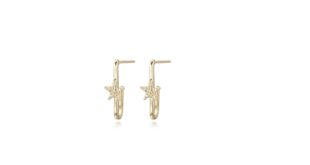Fashionable and functional can easily define the existence of sunglasses. It changes one’s entire look and also protects their eyes from glaring sun and dust.
What’s not to like about it, right? Now imagine if they could become even better. That’s where recycled sunglasses come up. Since most people are acutely aware of our world’s debilitating environmental system, it only makes sense to go down the ‘recycling’ path.
So, your coolness quotient will stay the same as ever, and the plastic will get recycled for the greater good, too!
The Making of Recycled Sunglasses
The eyewear industry has finally realised that glasses are perhaps one of the most common and essential accessories. Around 71% of Australians own a minimum of 1 pair of non-prescribed sunglasses.
Additionally, the industry is acutely aware of its negative contribution to environmental issues. So, the curation of recycled sunglasses is them doing their bit. But how are these recycled and made?
- Collecting: The first step is to collect plastic through different recycling points and programs.
- Sorting: Sorting happens after plastic collection based on the resin code (RIC). The different kinds of plastic fall under the following different categories:
- Polyethylene Terephthalate (PET or PETE)
- Polyvinyl Chloride (PVC)
- Polypropylene (PP)
- High-density Polyethylene (HDPE)
- Low-density Polyethylene (LDPE)
- Styrofoam (PS)
This sorting process is crucial in the process of recycling. If done correctly, remelting plastic becomes a smooth process. If not, the different kinds of plastic would amalgamate, creating a chaotic mixture that wouldn’t be usable.
- Shredding and Washing: After sorting, the plastic undergoes thorough cleaning. If the plastic is left uncleaned, it will not create an impure mixture. This again cannot be used to make glasses. Once properly cleaned, the plastic undergoes melting and pelletising.
- Melting and Pelletizing: After shredding and washing, the plastic is melted together to form plastic pellets. These pellets are used to make recycled glasses!
Why is it Beneficial for You to Wear Recycled Sunglasses?
The answer to that is relatively simple.
The creation of recycled plastic allows for recycling hazardous waste, previous shattered glass, demo lenses, broken spectacles, and plastic bags. This would otherwise go to waste and add to the growing landfills.
Additionally, these recycled glasses beautifully further the propaganda of sustainability.
- It also helps reduce the mounds of garbage expelled into the environment
- It naturally lowers the number of carbon emissions that otherwise contribute to the grave environmental disasters and threats to future generation
- You cannot ignore the fashion statement of recycled glasses either; all the while, you do your part to safeguard the planet
- Lastly, the recycled eyewear eliminates the challenges that the eyewear industry faces with obtaining raw material
As a consumer, you should always make an ethical choice and pick something that serves you and the environment is a win!
As crucial as eyewear is, making them sustainable and environmentally sound is also important. It’s not only good for us but the future generations as well.
With that said, recycled glasses look just as cool as any other, so your need to make an irrefutable fashion statement is also fulfilled! So, what’s the hold? Say yes to recycling now!
 BESTCITYTRIPS
BESTCITYTRIPS




